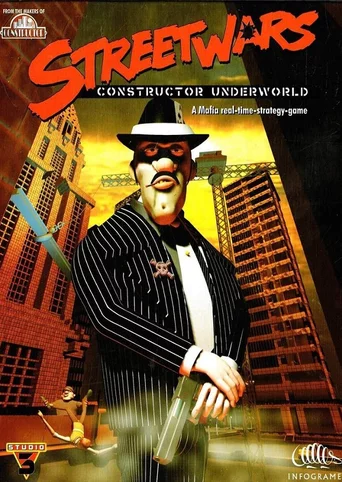
Streetwars: Constructor Underworld (1999)
Genres:Strategy, Real Time Strategy (RTS)
Themes:Business
Game modes:Single player
Story:"Streetwars" was the 1999 successor to the 1996 game "Constructor", continuing its city-building and management mechanics with a focus on mission-based gameplay
Vote to bring this game to GOG and help preserve it.36

Theatre of War: CollectionTheatre of War Collection is a compilation containing all games previously released in the Theatre of War series:
- Theatre of War
- Theatre of War 2: Africa 1943
- Theatre of War 2: Centauro
- Theatre of War 2: Kursk 1943Historical Warfare
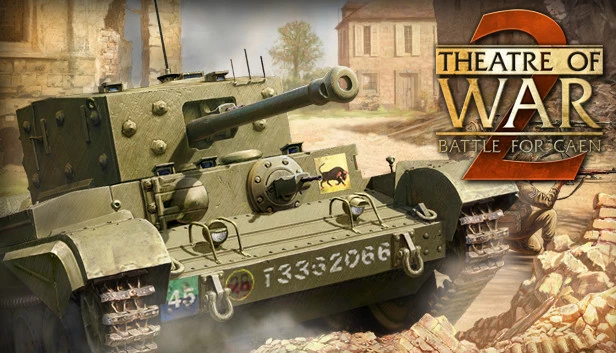
Theatre of War 2: Battle for Caen - Special EditionThis Special Edition includes:
- Theatre of War 2: Kursk 1943
- Theatre of War 2: Kursk 1943 - Battle for Caen.Historical Warfare
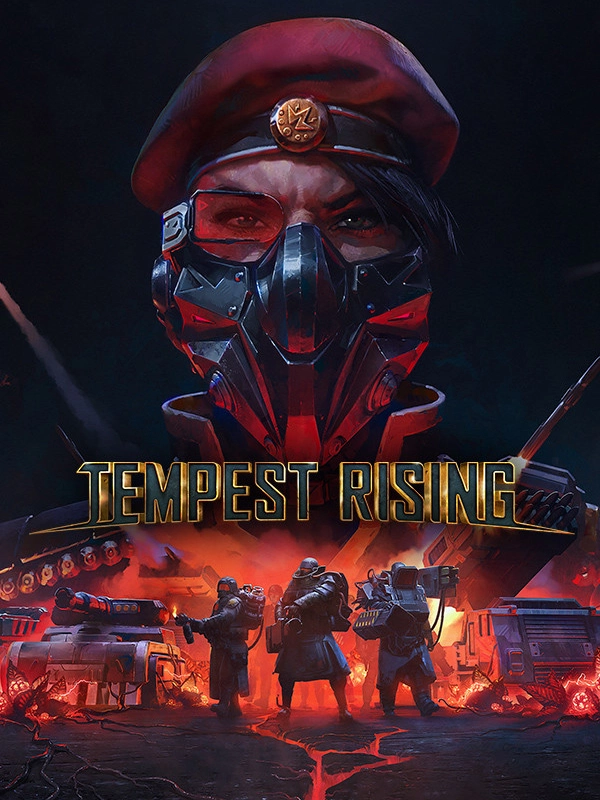
Tempest RisingClassic RTS action meets modern production and performance in Tempest Rising. Inspired by RTS greats of the 90s and 2000s, Tempest Rising is a classic, base-building real time strategy game set in a modern day alternative history war scenario. It features 3 unique factions, each with its own approach to combat and economy and offering a variety of strategies for players of all stripes, deep and rewarding gameplay that keeps a focus on strategy while rewarding skill, and built-in customization options that allow players to approach the game their way in both single player and multiplayer game modes.Action Warfare Science fiction
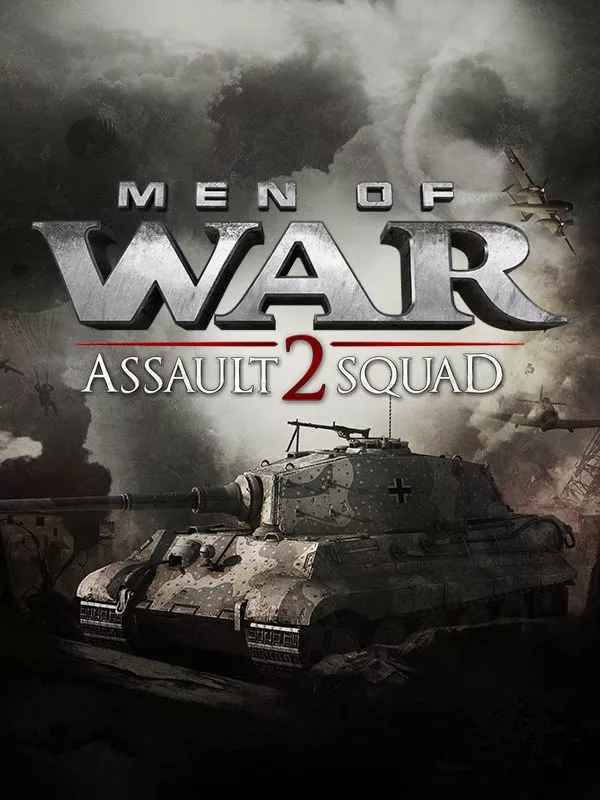
Men of War: Assault Squad 2Men of War: Assault Squad 2 features new single player style skirmish modes that take players from extreme tank combat to deadly sniper stealth missions. Commanders can now faceoff against opponents on various new multiplayer 1v1 – 4v4 maps. To truly bring the battles to life though there is the new 8v8 game mode designed for huge battles on spectacular maps.Action Historical Warfare

The Lord of the Rings: The Battle for Middle-earthThe players control the heroes or villians from the famous Lord of The Rings movies. With a hero characters similar to the Warcraft series you control both the armies and all the unique heroes. The game follows the movies very closely and even got scenes from the films appear in game. Not only does the game contain a giant campaign where you play through the journey of the ring as the good side, the game also features an evil campaign where as the players play as the evil forces of Middle Earth. With multiple diffrent races from all over Middle Earth, a giant spell tree to customize your game and a unique basebuilding layout the game was great for its time.Top Trending Fantasy Warfare
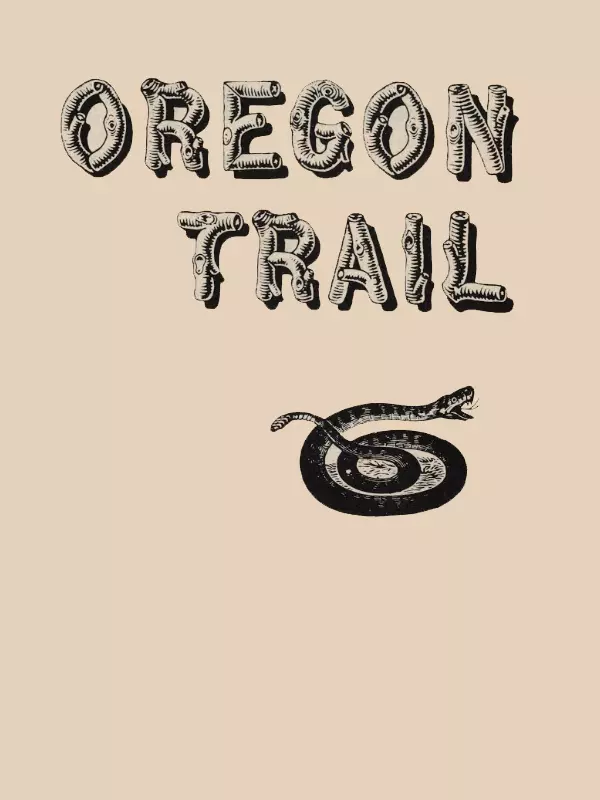
The Oregon TrailThe Oregon Trail is a computer game originally developed by Don Rawitsch, Bill Heinemann, and Paul Dillenberger in 1971 and produced by the Minnesota Educational Computing Consortium (MECC) in 1974. The original game was designed to teach school children about the realities of 19th century pioneer life on the Oregon Trail. The player assumes the role of a wagon leader guiding his or her party of settlers from Independence, Missouri, to Oregon's Willamette Valley on the Oregon Trail via a covered wagon in 1848.Historical Educational
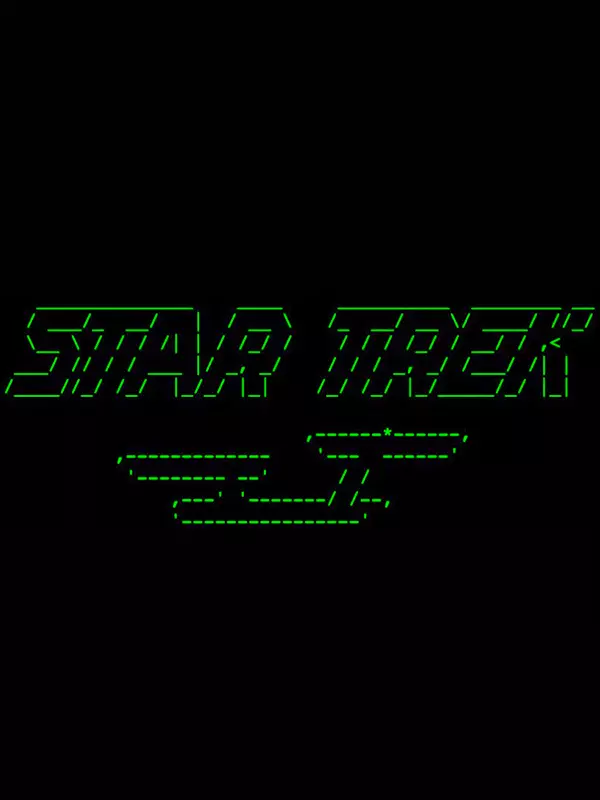
Star TrekStar Trek is a text-based strategy video game based on the Star Trek television series (1966–69) and originally released in 1971.
In the game, the player commands the USS Enterprise on a mission to hunt down and destroy an invading fleet of Klingon warships. The player travels through the 64 quadrants of the galaxy to attack enemy ships with phasers and photon torpedoes in turn-based battles and refuel at starbases. The goal is to eliminate all enemies within a random time limit.Science fiction
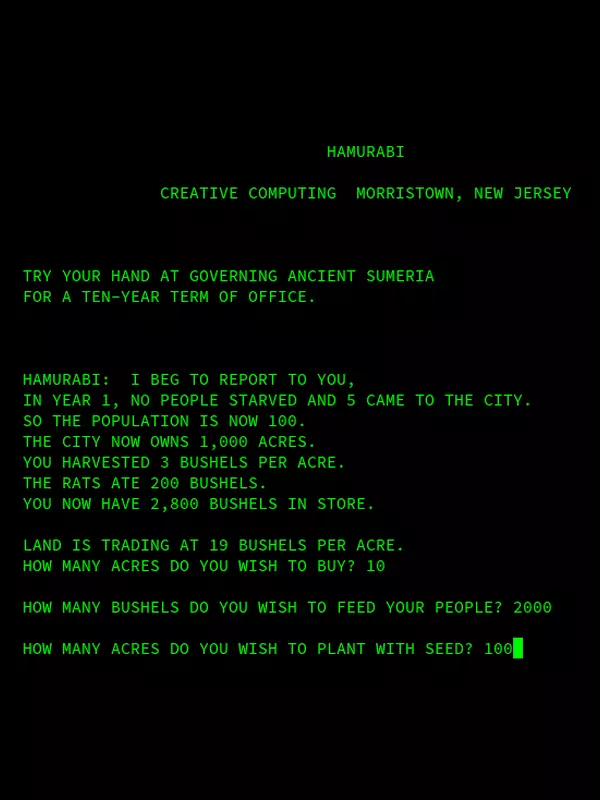
HamurabiHamurabi is a text-based game of land and resource management and is one of the earliest computer games. It was originally written in FOCAL in 1968, but it was ported to BASIC in 1971. Like many BASIC games of the time, Hamurabi was mainly a game of numeric input. As the ruler, the player could buy and sell land, purchase grain and decide how much grain to release to his kingdom.Historical Educational
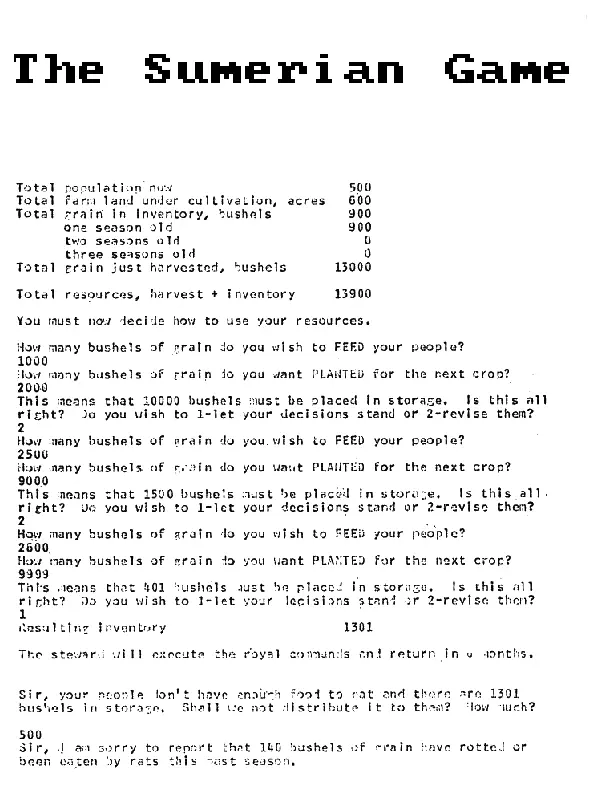
The Sumerian GameThe Sumerian Game is a text-based strategy video game of land and resource management. It was developed as part of a joint research project between the Board of Cooperative Educational Services of Westchester County, New York and IBM in 1964–1966 for investigation of the use of computer-based simulations in schools. It was designed by Mabel Addis, then a fourth-grade teacher, and programmed by William McKay for the IBM 7090 time-shared mainframe computer.
The Sumerian Game has been described as the first video game with a narrative, as well as the first edutainment game. As a result, Mabel Addis has been called the first female video game designer and the first writer for a video game.Historical

OXOOXO was a computer game developed by Alexander S. Douglas in 1952 for the EDSAC computer, which simulates a game of Noughts and crosses, also sometimes called Tic-tac-toe. OXO is the earliest known game to display visuals on a video monitor.
To play OXO, the player would enter input using a rotary telephone controller, and output was displayed on the computer's 35×16 dot matrix cathode ray tube. Each game was played against an artificially intelligent opponent.Educational